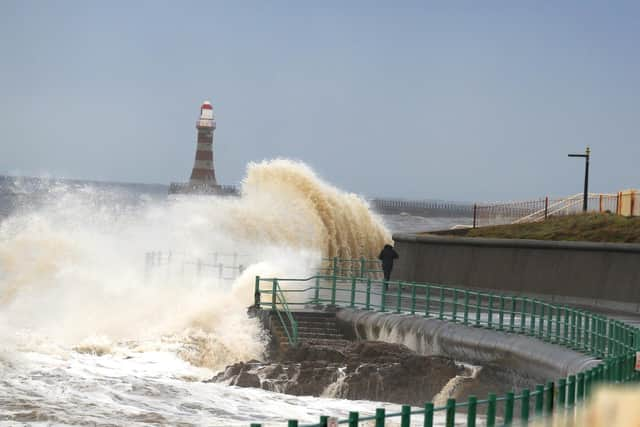Weather warnings for Sunderland: What are they and how do they work?
and live on Freeview channel 276
Following Storm Arwen last week, people have been told to brace themselves for another period of strong winds and weather warnings, but what are the warnings and how should they be received by the public?
What are weather warnings?
A system set up by the Met Office, weather warnings are used to alert the public of any strong weather fronts which may impact daily life. The system is also used by emergency response teams to prepare for any potential busy periods in the near future.
Advertisement
Hide AdAdvertisement
Hide Ad

Warnings are calculated by the Met Office’s Warning Impact Matrix, which considers the impact and likelihood of forecast weather.
What are the differences?
There are three types of weather warning for eight types of weather – rain, thunderstorms, lightning, snow, ice, fog, wind and extreme heat – and these are, in order of severity, yellow, amber and red.
Yellow weather warnings are used to make people aware of potential light impacts due to weather, such as travel delays or general disruption of day to day activities.
The least severe type of warning can also imply that the Met Office are monitoring the situation and means the public should also keep an eye out for updates.
Advertisement
Hide AdAdvertisement
Hide AdIf there is an increased likelihood of potential severity of bad weather, the weather warnings may rise to the amber level. This means further travel delays may occur in addition to power being temporarily lost from homes and the potential for risk to life and property. An amber warning may also be paired with a warning for people to be prepared and change their plans in the interest of safety.
Worse weather will be given a red weather warning, which implies that extremely bad weather is to be expected which can pose a risk to lives in addition to substantial disruption to power and travel in addition to property and wider infrastructure. The Met Office advises against travel if a red warning is in place.
How can I find out what weather warnings are in place?
In addition to traditional news media, the Met Office is always updating its website with news, and all enforced warnings are on the homepage of the website at the time of the weather front. The service’s app also gives warning notifications.